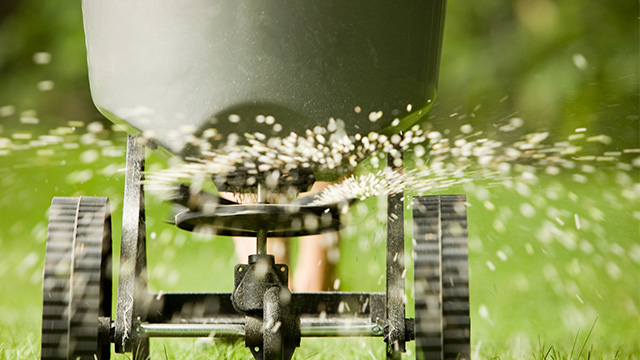Get the Yard of Your Dreams
John Deere lawn care expert Eric Halfman shares his secrets for achieving the perfect yard.
While it would be great to just snap our fingers and—voilà!—have healthy soil that produces the greenest grass and prettiest plants, it doesn’t really work that way. Rich, well-balanced soil takes time and work. So we talked to Eric Halfman, John Deere’s go-to-market manager for riding lawn equipment and utility vehicles, to help demystify all that goes into proper soil care.
Q: What is the general rule of thumb for building and maintaining nutrient-rich soil?
The best way to have nutrient-rich soil is to make sure you have a plan—nutrient-rich soil doesn’t just happen overnight. You need to make sure you’re aerating and thatching in the spring, aerating in the fall, and that you have a fertilizer plan in place (which should include three to four applications per year). One other thing I like to recommend is to mulch your grass when you mow. Mulching returns nutrients to your soil and can help it hold moisture longer. Watering is also very important, especially during those times of year where your soil can be stressed due to drought.
Q: How do you know if your soil is in good shape?
Sometimes you can see the issues. So first, be vigilant and actively look. Dead grass, thinning areas, grass color, or cracking in the soil might be signs of soil health issues. You can also look at the roots of your grass. Healthy roots should look white and be firm to the touch; unhealthy roots will be brown and soft.
Q: You mentioned mulching. What are the best ways to add mulch?
You usually use a lawn mower to discharge grass clippings out of the side of the mower. But if you mulch, you want to close off those blades and cut the grass multiple times before it returns to the ground, thus creating mulch. There’s an attachment you can have on your riding lawn tractors and residential zero-turn mowers—John Deere calls it “mulch control.” And it’s basically something you can do instead of side discharging that will allow the clippings to break down into the soil quicker and easier.

Q: Do you have any tips for choosing fertilizer?
The type you choose depends on the time of year. In the spring, you want to apply fertilizer that’ll build a strong root system. As you get further into the season, managing weeds will be key—so there are types of fertilizer for that. The type you choose should also depend on your type of grass. If you’re in the north with more bluegrass versus Bermuda grass, that will make a difference.
Q: If people could do just one thing to build better soil, what would it be?
Water is probably the number one thing to pay attention to. You don’t want to overwater, and there are right times to water (typically in the morning). A lot of folks water at night, which may promote bacterial or fungal growth within the soil and topsoil because the grass and soil don’t have a chance to dry out. It can also promote weed growth and a bad root system.
Q: In addition to overwatering, what else should people look out for?
Though harder to see, soil compaction is a big one. One sign that your soil is compact is if you notice a lot of runoff after it rains. Aeration is the best way to relieve compact soil. I have a tow-behind aerator at home that I use in the spring and/or fall. John Deere professionals can also be hired to do it for you.
Q: Are earthworms a good sign that your soil is healthy?
If you’re aerating, watering correctly, developing good root systems, and doing everything else we talked about, it will help ensure that the microorganisms that live in the soil are thriving. While worms aren’t quite so micro, if you see them moving freely through your soil because it’s not compacted and has moisture, that’s a good sign, and it will help ensure there are nutrients for proper plant growth.
For more on mastering your soil, check out our “Garden Soil: How to Improve Your Yard” article.


